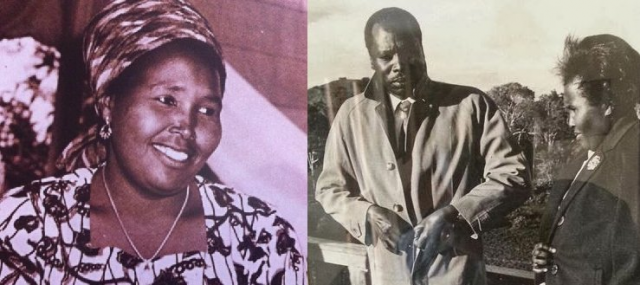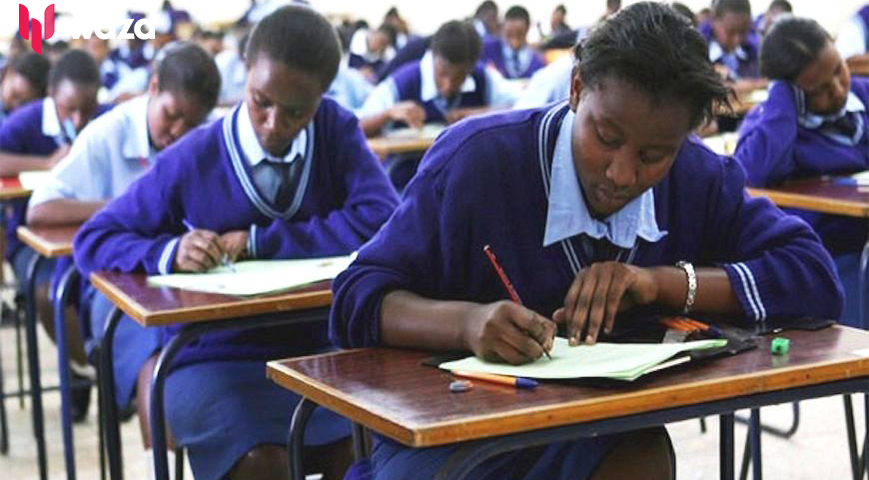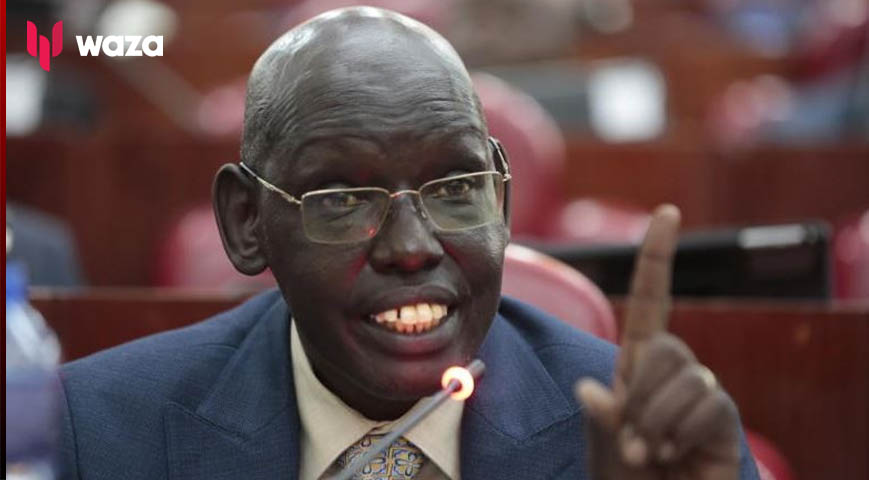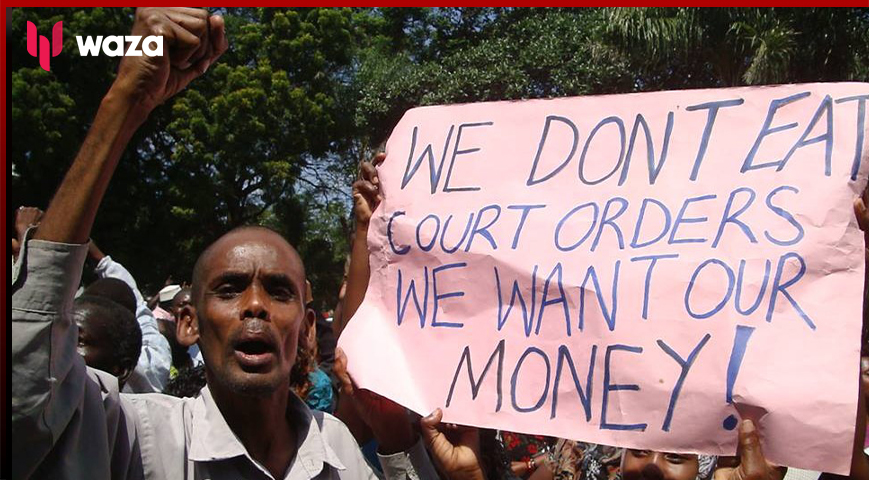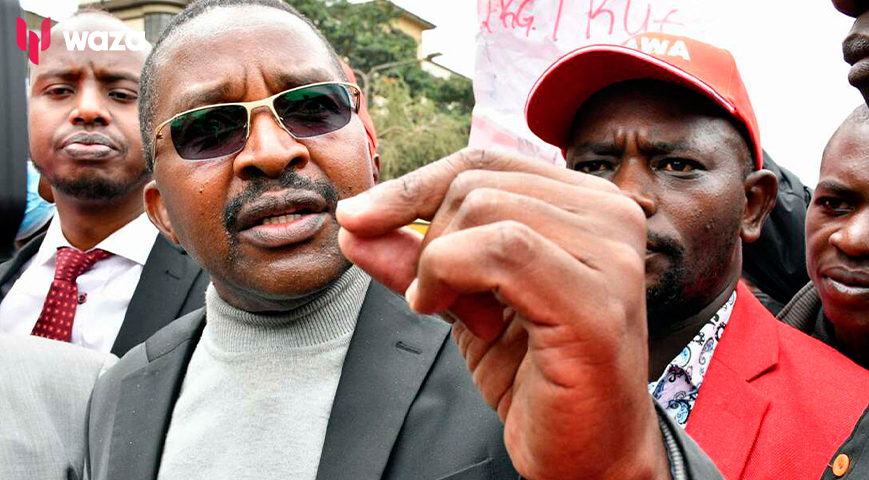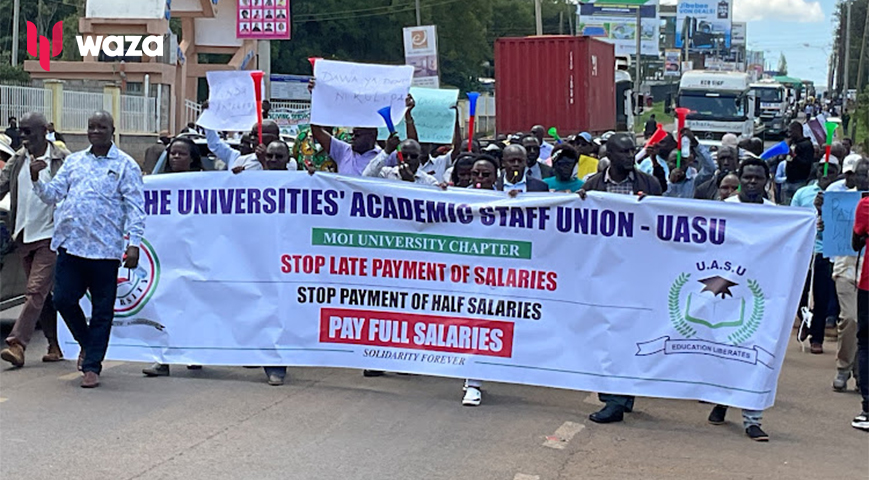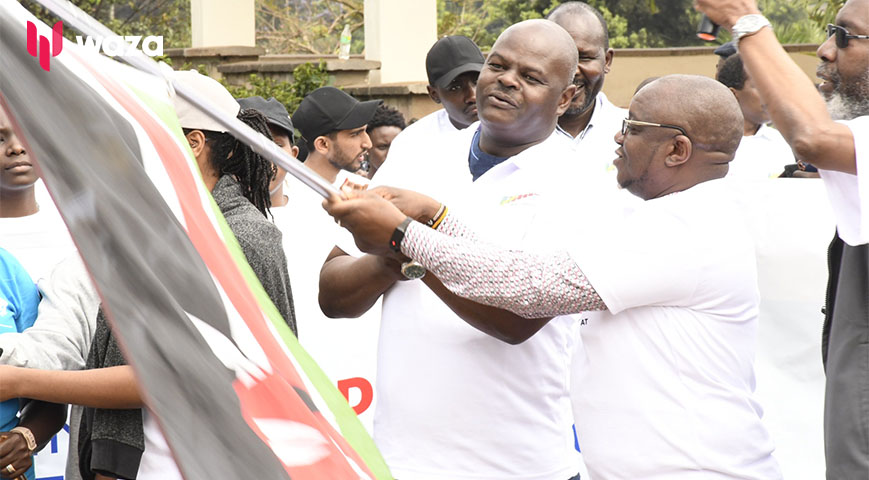Lena Tungo Moi strode Kenya's political scene as the vice president's wife in the 1960s and early 1970s. She then withdrew from public view in the middle of the 1970s, never to be heard of again until she died in 2004.
The breakdown of her marriage in 1974 and divorce in 1979 devastated the devout Christian raised according to stringent African Inland Church (AIC) principles.
The Paul Bomett family, Lena's parents, were pioneer Christians in Eldama Ravine. Moi, the young, tall, gorgeous, and well-mannered orphan kid, was respected by all. Moi ended up at the Bometts' house, where he discreetly eyed Helena, the lovely girl with a round face. Moi took refuge at the Bometts' home during the school holidays. He would also reside with Isaiah Chesire's Christian family, father to Kanu's nominated MP, Zipporah Kittony, and former Eldoret North MP, Reuben Chesire.
Did you read this?
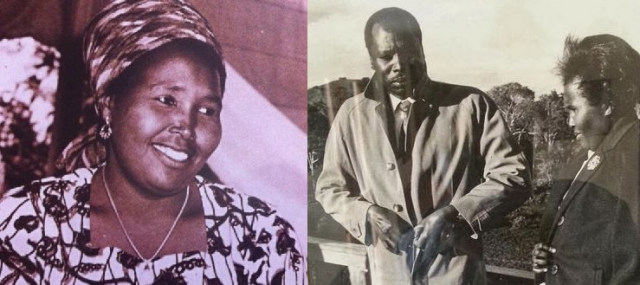
Kimoi arap Chebii, Moi's father, died in 1928.
Moi was just four years old then, and very little is known about his mother, Kabon.
His elder brother, Tuitoek, became his guardian, and he was one of the Sacho herdsboys recommended to join the new Africa Inland Mission (AIM) School in Kabartonjo in 1934 before it was relocated to Kapsabet.
Lena, born in 1926, attended the AIM School in Eldama Ravine before enrolling at the Tenwek Girls' Boarding School in Kericho. She was a genuine Christian; her brother William Bomett and sister Dina, together with her, became the face of educated converts.
After spending time in the United States with Christian families, Lena returned to become a primary school teacher and accompanied Moi to local churches. They'd each have a Bible. "She was an iron lady with a great sense of humour," said Paul Chemirchir in Andrew Morton's biography of Moi, The Making of An African Statesman.
During this time, Lena began dating Moi, whose position as principal at Tambach (suggested by then education officer Moses Mudavadi, Father of Musalia Mudavadi) propelled him to regional prominence, first as a teacher, then as a preacher.
Moi married Lena in a ceremony officiated by Reverend Erik Barnett a year after he returned from training at Kagumo Teachers College. Erik Barnett was an excellent decision. Unlike the Barnetts, Erik's younger brother, Paul, had baptized Lena after returning to Kenya as a missionary.
He also constructed Moi's first home. Again, while Moi was in Tambach, Paul would sleep in Moi's house as he travelled through the region, opening churches and schools. The connection was far more profound than that. Albert Barnett, Erik's father, had left Australia in 1907, feeling that God had called him to be a missionary in Kenya. Barnett, then a bachelor, took a steamship from Mombasa to Lake Baringo, where he stayed among the Tugen in what is now Kabarnet before settling at Eldama Ravine. The town of Kabarnet is named after him. It signifies "the location of Barnett."
This began to influence a generation of African Christians whose zeal for the gospel was unrivalled. They created a mission station in Eldama Ravine with his wife Elma, where many missionary families began converting locals to the church.
Moi would stay with the Barnetts when he wasn't with the Bometts. The narrative of Kapkorios Toroitich arap Moi and Helena Bomett, later Lena Moi, began here. Moi had travelled to the mission hoping to receive an education at the Barnetts-run African Inland Mission.
Paul and Erik Barnett, the two missionary sons of Albert Barnett, were his classmates when he served as the school captain of the government school in 1942. Due to their close friendship, Erik presided over Moi and Lena's wedding at the AIC mission in Eldama Ravine in 1950 after giving the Bometts four sheep, two heifers, and an ox in exchange. Francis Cherogony, who has known me for a long time, was the best man.
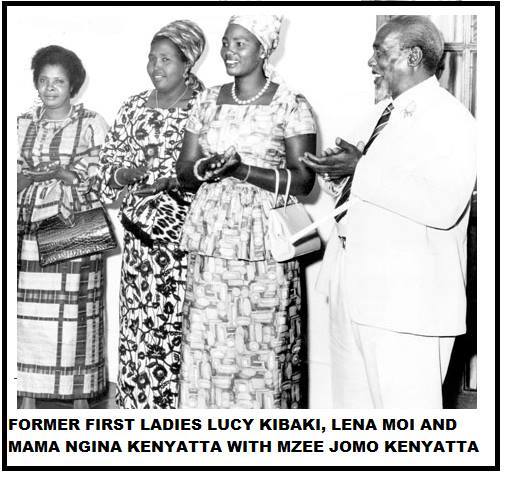
The couple settled at Tambach Government School, where Moi's first two children, Jennifer and Jonathan Kipkemboi, were born in 1952 and 1953, respectively. Lena gave up her teaching career to focus on raising her family.
Although most people who knew Moi in the 1950s believed he would make a great preacher, Moi preferred teaching above all else. Lena's life took a new turn when her husband was appointed to the Legco in 1955 to take the position of the ineffective John Ole Tameno. At the height of the situation, Moi purchased a Land Rover, established a posho mill in south Baringo, and then travelled extensively around the Rift Valley throughout his early married years.
The couple's dream of a peaceful teaching career was dashed when Moi and his family left the school grounds for Nairobi.
But Moi's political relationship with his in-laws was not always at its best. The fallout with the Bometts started in the 1961 election when his brother-in-law, Eric Bomett, stood against him as an independent candidate in the General Election. It was not personal. It was a matter of principle," Eric would later say. Although Eric would enter Parliament as a Specially Elected Member on a Kanu ticket, Moi's Kadu carried the day, eclipsing Kanu in the region.
As Moi was on the move in pre-independence politics, Lena became a housewife. In an interview in 1967, she said the children needed to be cared for by their mothers to grow mentally and physically healthy.
"She is equally assiduous about looking after her husband, who enjoys her cooking and only eats outside the home when he has to," veteran journalist Faraj Dumila, who conducted the interview, wrote. Moi would also remark: "I owe her much of my success in the service of my people and my country. She has always been an encouraging factor in all aspects of my political life."
But Moi chose not to say much about Lena to his official biographer, Andrew Morton, leading the writer to conclude: "The character of the man is elusive… a biographer's nightmare; happy to let you near, but not so close. He has mastered the art of selective deafness…" Thus, Moi reveals nothing about his ex-wife. We know that in most of his public functions, especially after independence, Lena was always in tow, spotting a headscarf or with her Afro hair pulled back.
There was also the romantic walk in July 1970 on the Orapa pipe in Botswana, where the world's richest diamond mines had been discovered. With most of her children in their teens, with the last-born, Gideon, having been born in 1964, Lena had ploughed herself into public meetings, conducting Harambee and supporting women's groups in the Rift Valley.
But Moi's appointment as vice president in 1967 brought her to the national limelight, and she was to enjoy six years of fame. Lena was everywhere. She shifted to Nakuru's Delamere (now Moi) Flats in the Milimani area and enrolled her children at St Joseph's Primary School. She was loved by her neighbours due to her humility.
At the height of her popularity, President Jomo Kenyatta bestowed on her on January 1, 1968, the Order of the Golden Heart medal for her service to the community. That week, when the wife of the US vice-president, Hubert Humphrey, arrived in Nairobi as part of her husband's "listen-and-learn" Africa tour, Lena led the government delegation that received Mrs Humphrey at the Embakasi Airport, although she held no government position. Moi would arrive at the airport later to receive Mr Humprey and then the US ambassador to Kenya, Glenn Ferguson.
With Kenyatta suffering a heart attack in 1969, Moi (and, to an extent, Lena) were left to fill in for official engagements. In the mix, Moi abandoned Lena for politics, which was fast-moving and dangerously so after Tom Mboya's assassination in 1969. This year, he bought the Kabimoi Farm and built a house where Lena settled. Moi was also a frightened man. "He would travel anywhere, do anything, see anybody if that was Kenyatta's wish," wrote Morton.
These schedules, some deliberately crafted by Kenyatta allies to tire him, broke his family. His Kalenjin rivals, like Jean Marie Seroney, also portrayed him as a sell-out to the Kikuyu. In 1974, Moi's place in Kenya's politics was severely threatened by the mandarins surrounding Kenyatta. As he was fighting for survival and getting harassed in the Rift Valley by provincial commissioner Isaiah Mathenge and roads engineer Kim Gatende on behalf of the Kiambu mafia, his marriage to Lena took a nose-dive.
Lena started disappearing slowly from the public arena, and little was known about what else caused the cracks. Moi's biographer blames politics, and there is little about Moi's days with Lena. It leaves the reader unable to glimpse the woman who bore him eight children. Instead, Moi lets family and friends speak of Lena.
Archival photos demonstrate that, in fact, Kenyatta danced with Lena, and Moi danced with Mama Ngina during that event, despite what they claimed to be Andrew Morton. They claimed that Lena's public rejection of Kenyatta during a dinner dance at the Rift Valley Technical College caused the final breakup. In his book, Morton suggests that when Kenyatta invited Lena to dance, she insulted him. As a devout Christian, (Lena) thought dancing was wrong, but the President's criticism greatly embarrassed Moi.
Rev Paul Barnett, who knew both Moi and Lena, was possibly aware of the couple's issues. He was the only one who agreed to be interviewed about Lena and their breakup, but only to say, "It was for the best that they parted." Lena went to the couple's Kabimoi ranch estate in Baringo after leaving the vice president's official mansion in Nairobi's Kabarnet Gardens. The youngsters who were in school were sent to boarding schools. She then immersed herself in country life, attending the local church, joining women's clubs, and avoiding the glare of the media that she had grown accustomed to.
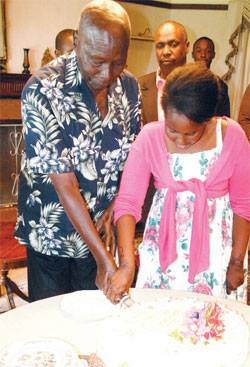
With Moi having moved away with their children, Lena hoped that Moi would return to the matrimonial house after he finished politics. Apart from Jonathan, who resided in Kabimoi with his mother, the other 7; Jennifer, Raymond, John Mark, Doris Elizabeth and her twin Philip, Gideon, and adopted daughter June — chose to stay in Nairobi with their father.
Despite this, his biographer writes, "Moi had little delight from his family... Those who are familiar with the family say that, with the probable exception of Gideon and June, the President felt saddened and let down by his children."
Raising the children without their mothers was difficult for everyone in the household. Moi was also fighting for political survival as a change-the-constitution campaign was launched to prevent him from becoming President.
Kenyatta died four years after the separation, and Moi won the presidency courtesy of Charles Njonjo and Mwai Kibaki. Lena had faded from sight by this point. While others believed that this allowed Moi to concentrate on his politics, there appeared to be a lapse in communication on her whereabouts.
Moi was irritated that, except for Gideon and June, his other children did not appear in public to support him when he was President. The divorce was finalized in 1979, and Lena "was accommodated in Moi's family." She was never seen at her own children's weddings. Lena was kept in the background for her father's burial in 1997.
Moi and Lena saw fewer and fewer of their children after their divorce. "This combination of absence and sternness produced the inevitable backlash, and as adolescents, the boys rebelled against their father's austere moral code," Morton said, adding that some were chastised by presidential guards.
The fact that Lena skipped her children's religious marriages revealed a schism between her and Moi. That explains why, in August 1982, when rebel fighters from the Airforce announced that they had toppled the President, Moi's bodyguards were told flatly "No" when they attempted to transport her from Kabimoi to a safe location. Moi had dispatched three lorry loads of troops to her property to evacuate her, but she had told the soldiers that she had a telephone that could reach Kabimoi and heaven.
"The men went inside and removed their caps as she knelt in prayer." As she prayed for the country, the enemy's deliverance, and her husband's safety, a soldier sitting outside... screamed the news that the enemy had been defeated." Lena was not about to depart Kabimoi, and Moi had settled at Kabarak near Nakuru town this time.
Lena's death in July 2004 sparked consternation. Initially, it was announced that she would be laid to rest in Sacho. However, her funeral was moved to Kabarak, where she was laid to rest on the manicured lawns in front of the stately bungalow where Moi lived before his death.
In death, Lena has been reunited with her husband.

